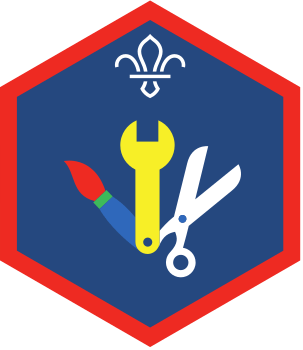Snack swap
You’ll need
- Pens or pencils
- A4 paper
Before you begin
- If you want a quicker game, or you’re not sure people will want to make the cards, make them in advance and just put them in a pile in the middle.
Chat about food
- The person leading the activity should help everyone think about how it would feel to eat a really unbalanced diet. How would they feel in their bodies if they didn’t eat carbohydrates or if they only ate ‘fun foods’ that are higher in fat, salt, and sugar?
Make some cards
- Everyone should think of some foods they eat fairly often. They should write each main ingredient on a piece of paper with three or four words to describe it, for example, crunchy, sweet, or spicy. For example, if someone thought about stir fry, they might put tofu, noodles, stir fry sauce, and two or three vegetables.
- Everyone should add some information about whether each food is lower, medium, or higher in energy, fat, and salt.
- Everyone should put their cards in the middle of the space.
Play the game
- Everyone should split into teams. Each team should find a space to be their base.
- When the person leading the activity says ‘Go!’, one person from each team should run to the middle, choose a food card, and bring it back to their team.
- Once they return, the next person should go.
- Each team should aim to build a balanced meal and snack that, between them, cover all the food groups and have a balance of foods higher, medium, and lower in energy, fat, and salt.
- Once there are no more cards in the middle, teams can start taking cards from another team’s pile. Only one person can leave each team at once and they can only take one card. Teams can’t hide their cards or stop people taking them.
- After three minutes, the person leading the game should say ‘stop’.
- Everyone should display their meal and snack. Did they manage to make something balanced and tasty?
Reflection
This activity was all about thinking about food, including flavours, textures, and nutrition. Why is it important to think about the ingredients that go into a meal or snack? People could think about knowing what to buy, avoiding allergens, personal preferences, and making sure they have a balanced diet. It’s useful for people (and their parents and carers, if they’re a young person) if to be mindful of how much fat, salt, and sugar are in their diets. This doesn’t mean people shouldn’t eat fun foods, but that they should be just one part of a varied diet.
Each team had to work together to make a meal and snack that made sense. How did people decide what foods to look out for? How did they decide who’d go and fetch a card next? Did anyone use any clever tactics (without breaking the rules) to make foods they wanted to keep seem less appealing to other groups?
Safety
All activities must be safely managed. You must complete a thorough risk assessment and take appropriate steps to reduce risk. Use the safety checklist to help you plan and risk assess your activity. Always get approval for the activity, and have suitable supervision and an InTouch process.
- Active games
The game area should be free of hazards. Explain the rules of the game clearly and have a clear way to communicate that the game must stop when needed. Take a look at our guidance on running active games safely.
- Rubbish and recycling
All items should be clean and suitable for this activity.
- Food
Remember to check for allergies, eating problems, fasting or dietary requirements and adjust the recipe as needed. Make sure you’ve suitable areas for storing and preparing food and avoid cross contamination of different foods. Take a look at our guidance on food safety and hygiene.
Be flexible with the time limit – the idea is that people should have to start taking items from other groups.
There are lots of reasons people might find talking about food tricky, including eating disorders, disordered eating, sensory sensitivities, and a lack of access to food or cooking facilities. Be sensitive in how you approach this activity – some people may appreciate knowing you’ll cover the topic in advance, you might need to take extra care to avoid talking too negatively about food (including food higher in sugar or fat), or you may want to keep it general and avoid asking people about their personal experiences, for example.
Anyone who doesn’t want to take part in the active element of this team could be the chef and take charge of meal planning. They could direct their friends and tell them what sort of food’s missing from their meal and snack.
All Scout activities should be inclusive and accessible.
When could you bring these meals and snacks to life? If people planned any they’d like to try, think about whether you could spend a session cooking or add them to the menu for your next camp.
Encourage groups to run this activity themselves where they can.

